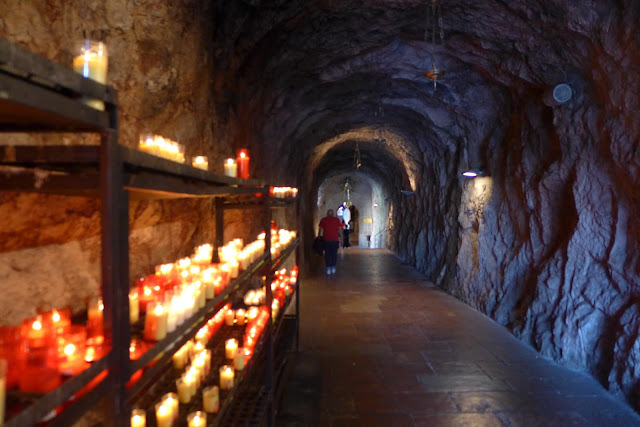The name "Covadonga" in Latin means "Cavern of the Lady." Covadonga is a small village and is one of the eleven parishes in Cangas de Onis, which is a municipality and an autonomous community in the province of Asturias. It is located in the Picos de Europa mountains in north-west Spain.
Today, tourists and pilgrims flock to Covadonga to visit Our Lady of Covadonga, who had a hand in the battle that started the reconquest of Spain from the Moorish occupation - the Arabs and Berbers who came from Northern Africa. The reconquest of Spain lasted for 770 years.
Basilica of Santa María la Real of Covadonga
This sanctuary is a monument that is dedicated to Our Lady of Covadonga, to commemorate the Battle of Covadonga, and came to be run by the Agustinians. The church was built in the 1600s but was destroyed by a fire on October 17, 1777. The shrine was rebuilt in the 1901 with the architectural design of Roberto Frassinelli.
Back in 711, the Christian Visigoth King, Roderick, lost and was killed during the Arab invasion of Visigothic Spain, in the Battle of Guadalete. This led to the take over of the Iberian Peninsula, by the Muslims. The remaining members of the Visigoth noble family retreated to the mountains in northern Spain.
Based on text discovered in Northern Spain in the ninth century, in 718, Pelayo or Pelagius - whose father was a dignitary at the court of the Visigoth King, Egica - was elected as their new leader. King Pelayo organized a band of warriors to fight the continuing advance of the Islamic conquistadors. In 722, the Arab commander gave orders and dispatched his army to fight the resistance in Covadonga.
Military might, at that time, consisted of a large army, spears, and attack formations for the Muslims. On the Christian side, they relied on their faith and prayed, and used their location as a defense position.
The story that has been passed on from generation to generation is that Pelayo had gone into a cave, where a hermit had hidden a statue of the Virgin Mary which he had managed to save during the Arab invasion. Pelayo got down on his knees and prayed to Our Lady for victory against the Moors.
On the day of the attack, in 722, with Pelayo and his few soldiers up in the cave, the moorish commander and his army shut their arrows aimed at them. But the arrows turned around and struck the attackers, killing the commander and many of his soldiers. Also, on the Christian side, St. Michael the Archangel, with his band of angels, showed up and fought side by side with Pelayo and pelted the soldiers with rocks.
King Pelayo gave credit to the intercession of the Virgin Mary. In thanksgiving, King Alfonso I, the Catholic (739-757) ordered that a monastery be built, and on the cave site, a chapel to honor Our Lady of Covadonga.
This battle was the first Christian reconquest from Islamic rule. This victory earned Asturias her independence in north-west Spain.
Hermitage and chapel
Entrance leading to the Cueva de Maria
On one of the cave openings
A hymn in honor of Our Lady
The cave where Our Lady appeared to King Pelayo, and from where he fought from is now a chapel, next to the Hermitage.
The remains of Kings Pelagius and Alfonso I are in this holy cave.
View from the bridge
Water trickling down from the rocks
The Chapter House - where the museum and gift store are located
The basilica houses a statue of Our Lady of Covadonga that dates back to the 16th century.
Our Lady of Covadonga is a major Marian shrine in Spain. She is the patron saint of Asturias. In the Past, the army has named several of its units Covadonga, in her honor.











